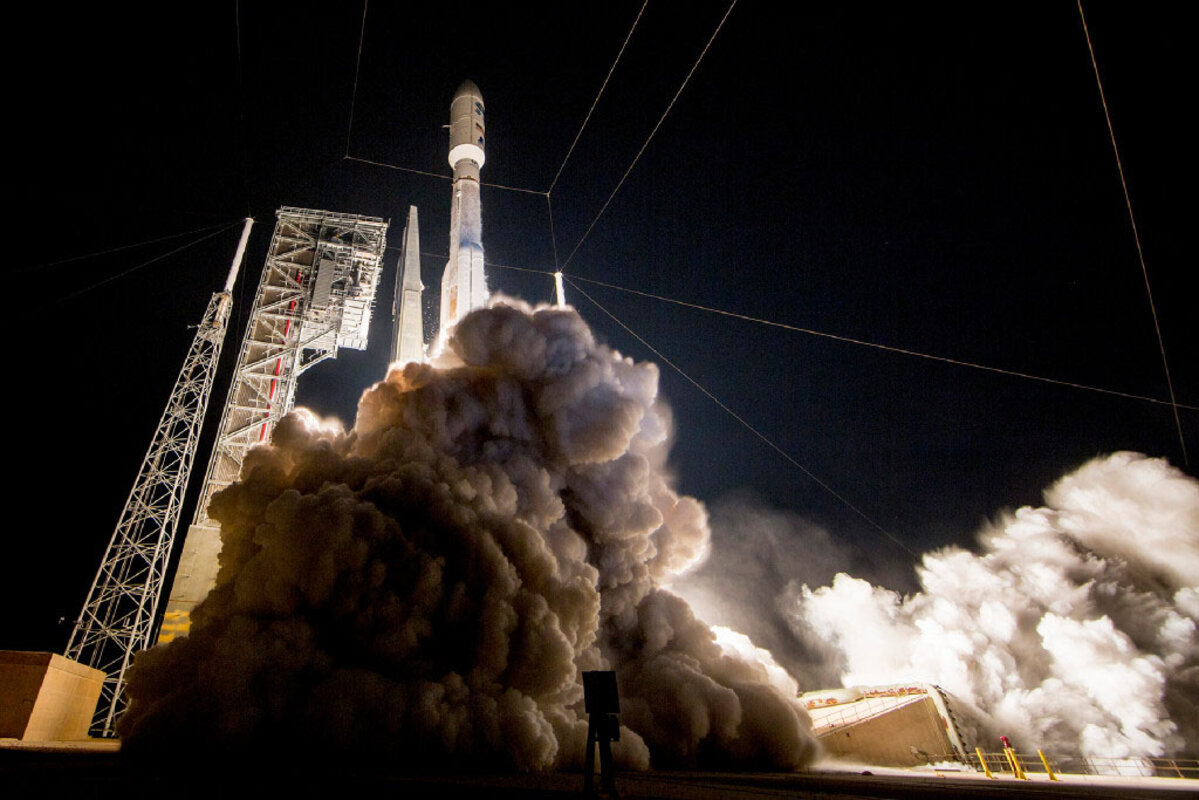Budget cuts at NOAA threaten climate-monitoring satellite program
Loading...
Later this year, the National Oceanic and Atmospheric Administration plans to launch the . Completing a polar orbit 14 times each day, it will give NOAA an unprecedented amount of infrared and atmospheric data – information that’s necessary to keep weather forecasts, agricultural outlooks, and disaster plans accurate as Earth’s climate warms.
These benefits won’t come cheap. – an abbreviation for Joint Polar Satellite System – this year alone, and projects a nine-digit price tag for the mission each year through the mid-2020s.
But will NOAA be able to afford this satellite? reveals that the Trump Administration aims to cut NOAA’s budget by 17 percent next fiscal year. That’s in line with an 18 percent cut to the US Commerce Department, which administers NOAA. But the agency’s satellite data division would lose 22 percent of its funding, or $513 million.
“Cutting NOAA’s satellite budget will compromise NOAA’s mission of keeping Americans safe from extreme weather and providing forecasts that allow businesses and citizens to make smart plans,” former NOAA administrator Jane Lubchenco told the Washington Post. She added that 90 percent of the information for weather forecasts comes from satellites.
As NOAA administrator from 2009 to 2013, Dr. Lubchenco of funding for climate-monitoring capabilities. The proposed cuts to NOAA could be the latest Trump administration break with its predecessor’s environmental policies. Now, Congress needs to decide whether to green-light this shift.
Political changes have grounded Earth-observing satellites before. In the late 1990s, NASA designed a satellite called DSCOVR, or Deep-Space Climate Observatory, with the enthusiastic backing of then-Vice President Al Gore. But in 2001, the satellite’s planned launch was put on hold, and DSCOVR spent more than a decade in storage.
, Popular Science’s Bill Donahue found evidence that politics had sidelined the program: It had become derisively known as “GoreSat,” and one “unnamed NASA informant” claimed that Gore’s successor Vice President Dick Cheney, killed the program. In multiple FOIA requests, NASA failed to provide evidence to the contrary.
The Trump administration has been much clearer about its view of Earth science. In a November 2016 interview with the Guardian, Trump transition team member Bob Walker proposed eliminating NASA’s Earth Science division, “We see NASA in an exploration role, in deep space research ... Earth-centric science is better placed at other agencies where it is their prime mission.”
In practice, NASA often collaborates with “other agencies,” such as NOAA, in order to pool their funds and combine their unique areas of expertise. Not only would Mr. Walker’s proposal upend this practice, but NOAA’s budget cuts could leave it less able to shoulder the work of NASA’s Earth Science Division – or operate next-generation satellites like JPSS-1.
But the budget-making process could offer hope for both agencies and their satellites. In its first budget, the Obama administration allocated $9 million to refurbish DSCOVR and prepare it for launch, Donahue reported. .
At first glance, today’s Congress might seem unlikely to back more climate research. But for all its capabilities, .
It’s scheduled to launch from Vandenberg Air Force Base in California and send some of its data to research centers in Colorado, Maryland, New York and Virginia – all of which voted Democratic in 2016. But labs in the Trump-leaning states Alabama, Alaska, North Carolina, and Wisconsin, will also have a role, and the satellite will carry secondary payloads from Massachusetts, Tennessee, Arizona, Wisconsin, and Idaho.
The satellite’s cancellation could leave Senators and Representatives from all those states fielding questions from angry scientists and high-tech workers. As meteorologist David Titley, who served as NOAA’s chief operating officer in the Obama administration, told the Washington Post,
[Editor's note: The original story gave an incorrect figure for the cost of refurbishing DSCOVR for launch]





